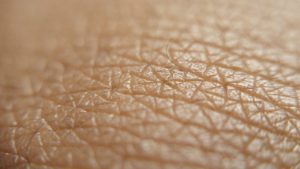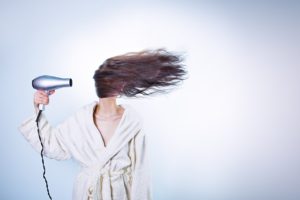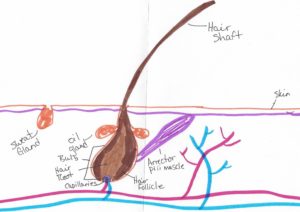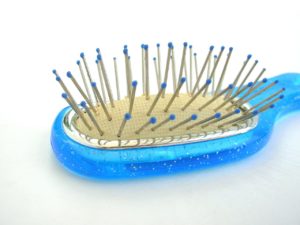Skin Conditions [Show Notes]

Dry skin
It is usually due to your skin not having enough of its own natural oils (probably strips from soaps, cleansers, chemicals). Moisturizing lotions and creams are “greasy” to try and match the oil of your skin. The oil make the skin waterproof – keeps water out, but also keeps water in (prevents evaporation)
Eczema – dry skin with an immune/inflammation component. The deeper layers of the skin will release inflammation chemicals that irritate the other cells in the area and lead to redness, pain, and swelling. It’s common for kids to have eczema but then grow out of it, but other conditions can cause eczema to flare (in my case, pregnancy).
Rash
Rash is one of the most ambiguous symptoms to try and figure out what the root cause is. Rashes can be round or splotchy, symmetrical or asymmetrical, raised or flat, big or small. Rashes are caused by some type of inflammation process (most commonly histamines). Rashes are a sign that your body has been offended by something – either from the inside and then the chemicals reach the skin to cause rash, or from the outside that touched your skin and caused chemicals to be released.
*Hives – a very distinctive rash with raised, irregular borders that may be red, but can also maintain their “flesh color”. Most commonly involve histamines, thus antihistamines (like benadryl can help them go away). Can possibly be triggered by stress (the stress hormones cause a chain reaction of chemical release which may lead to hives).
*Viral exanthem – “exit rash”; a rash that kids will get when their body has finally beat a virus. Some start at the top of the body and then moves down to their feet. Others start on the torso or core and then move out to the extremities. Antihistamines do not help it, but they rarely hurt or itch or bother the kid in any way.
Acne
There are different pores in your skin (sweat glands, oil glands, hair follicles). The oil on your face helps to trap bacteria and dirt that could get deeper in your skin and possibly hurt you. The goal of cleaning your face, is to cleanse off the “dirty” oil, but not all the oil (because the result is either dry skin or over-production). So the dirty oil plus the shedding dead skin cells can clog up any of these pores. Blackheads are specifically when hair follicles are clogged – and they look black b/c the melanin proteins that get built into hair can be seen. Generally small blackheads and whiteheads are not painful, unless a lot of bacteria are involved and they begin to fester.
Cystic acne is when a larger area that involves multiple pore or hair follicles get clogged and infected with bacteria and then the spot can become swollen and painful (and unsightly).
Hormones regulate the oil production, that’s why puberty increases acne, stress increases acne, all of the transitions surrounding pregnancy can increase acne. As long as you have hormones, you’re going to have a risk of acne. Also, working in really dirty environments can increase the amount of dirt that could clog up pores.
Infections
Ringworm = tinea corporis (there’s no worm involved, it’s a fungus). Classic circular rash that is red and flakey and possibly flesh-colored in the middle.
If it’s on your head (tinea capitis = cradle cap). If it’s in your groin (tinea cruris = jock itch). If it’s on your feet (tinea pedis = athlete’s foot).
Tinea vesicolor = the fungus causes the skin to lose pigment (this is NOT vitiligo, which is the death of melanocytes and they don’t grow back, Michael Jackson).
Candida is the yeast that is a part of your natural skin flora, but can lead to rash if it gets out of balance.
Bottom Line
If there is anything on your skin that bothers you, see your doctor!
Connect with me
Support us on Patreon
*NEW* Join the Pharmacist Answers Podcast Community on Facebook
Subscribe: iTunes, Stitcher, GooglePlay, TuneIn Radio
Music Credits: “Radio Martini” Kevin MacLeod (incompetech.com) Licensed under Creative Commons: By Attribution 3.0 http://creativecommons.org/licenses/by/3.0/



